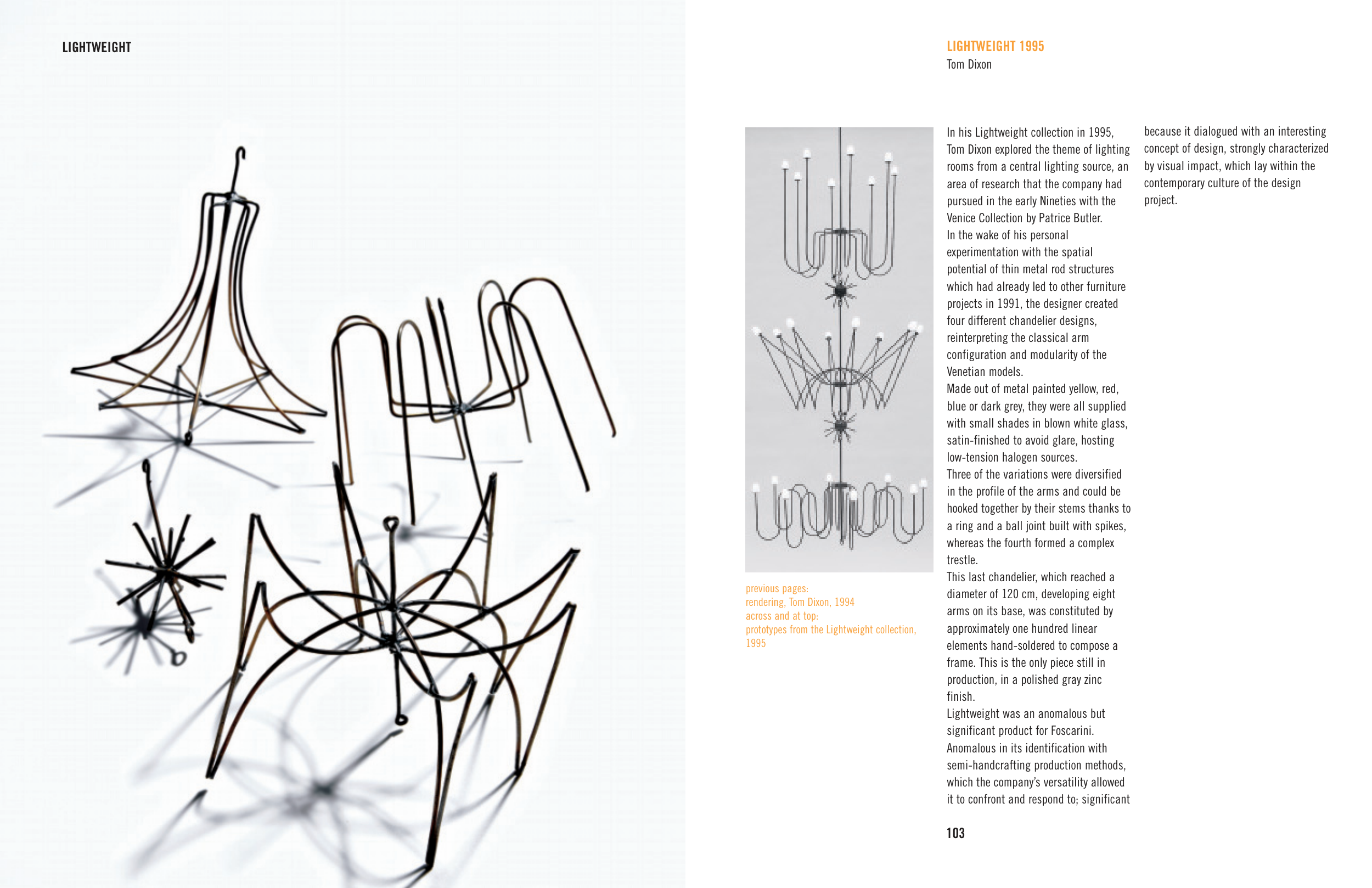LIGHTWEIGHT
103
LIGHTWEIGHT 1995
Tom Dixon
In his Lightweight collection in 1995,
Tom Dixon explored the theme of lighting
rooms from a central lighting source, an
area of research that the company had
pursued in the early Nineties with the
Venice Collection by Patrice Butler.
In the wake of his personal
experimentation with the spatial
potential of thin metal rod structures
which had already led to other furniture
projects in 1991, the designer created
four different chandelier designs,
reinterpreting the classical arm
configuration and modularity of the
Venetian models.
Made out of metal painted yellow, red,
blue or dark grey, they were all supplied
with small shades in blown white glass,
satin-finished to avoid glare, hosting
low-tension halogen sources.
Three of the variations were diversified
in the profile of the arms and could be
hooked together by their stems thanks to
a ring and a ball joint built with spikes,
whereas the fourth formed a complex
trestle.
This last chandelier, which reached a
diameter of 120 cm, developing eight
arms on its base, was constituted by
approximately one hundred linear
elements hand-soldered to compose a
frame. This is the only piece still in
production, in a polished gray zinc
finish.
Lightweight was an anomalous but
significant product for Foscarini.
Anomalous in its identification with
semi-handcrafting production methods,
which the company’s versatility allowed
it to confront and respond to; significant
because it dialogued with an interesting
concept of design, strongly characterized
by visual impact, which lay within the
contemporary culture of the design
project.
previous pages:
rendering, Tom Dixon, 1994
across and at top:
prototypes from the Lightweight collection,
1995


